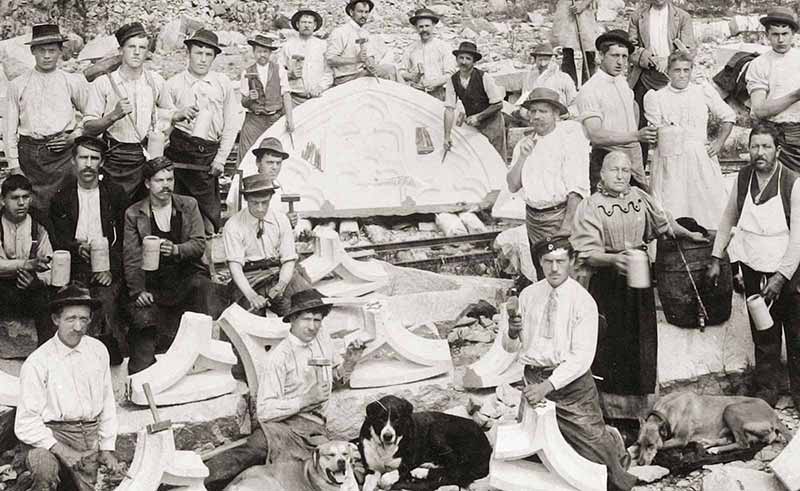Behind the window openings you can see a “Haubenk,” the colloquial name for a stonemason’s workplace. The stone to be carved rests on wooden trestles. And on the granite block are the few necessary tools.
In the film, you can watch master stonemason Ludwig Bauer at work:
He uses a chisel to create a straight edge.
He trims the edge area with the chisel, also known as “pulling up the chisel”. This prevents edge chipping during further surface treatment.
The pointing tool is used to remove unevenness or to work on profiles.
The mallet is used to level the surface.
And, of course, you need a striking tool: the hand mallet, which provides a short and hard blow.
Until the early 20th century, this was all a stonemason had at his disposal to give the granite its shape. Plus a great deal of skill and stamina, of course. This was also needed for the preliminary extraction of the raw blocks.
Exposed granite blocks were processed wherever possible to obtain the required stone material. If necessary, surface quarries were created.
First of all, the natural fissures in the granite were used to split the blocks. Further splitting was a lengthy process. First of all, wedge holes had to be made, into which steel wedges were inserted and driven by hammering.
Moving the heavy load was a crucial issue throughout the entire history of using natural stone. Raw blocks, as well as finished stone, often weighed several hundred kilograms. Sophisticated mechanical lifting aids were developed for this purpose as early as the Middle Ages.
Ultimately, two basic, practical principles had to be applied intelligently and consistently: the lever and pulley. The winch in its various forms combines both principles. Even before motorization, it was possible to move gigantic weights. The 33-ton royal “monoliths” that you’ve already encountered provide a good example of this.
I’ll tell you what happened to these broken columns right next to the switch setting device.
